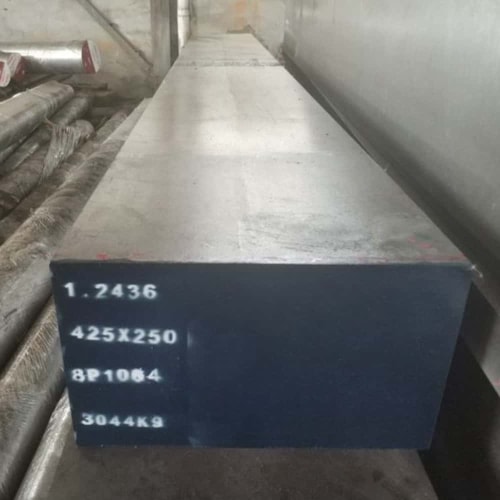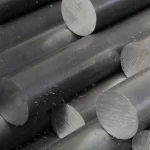Introduction

In modern manufacturing, selecting the right material for mold making can significantly impact the efficiency and longevity of production processes. D6 tool steel has gained prominence as a preferred choice among mold makers due to its exceptional properties and advantages. This article delves into the unique characteristics of D6 tool steel and its myriad benefits in various mold making applications.
Properties of D6 Tool Steel
D6 tool steel is distinguished by its composition and heat treatment, which endow it with superior mechanical properties crucial for mold making. Comprising high carbon and chromium content, D6 offers excellent wear resistance, toughness, and dimensional stability. These properties are further enhanced through proper heat treatment processes, typically achieving a hardness range of 58-62 HRC (Rockwell Hardness Scale). Table 1 provides a comparative overview of key properties between tool steel D6 and other common mold making materials.
Properties of D6 Tool Steel
| Property | D6 Tool Steel | Comparison Material 1 | Comparison Material 2 |
|---|---|---|---|
| Wear Resistance | High | Medium | Low |
| Toughness | Excellent | Good | Fair |
| Dimensional Stability | Excellent | Good | Fair |
| Hardness (HRC) | 58-62 | 52-56 | 48-50 |
Advantages of Using D6 Tool Steel in Mold Making
Superior Wear Resistance
The exceptional wear resistance of tool steel D6 makes it an ideal choice for molds subjected to abrasive materials and high production volumes. This property ensures prolonged mold life and reduces the frequency of tooling changes, thereby enhancing operational efficiency.
High Toughness
D6 tool steel exhibits high toughness, enabling it to withstand impact loading and mechanical stresses without fracturing or deforming. This characteristic is crucial in applications where molds endure frequent loading and unloading cycles, maintaining dimensional accuracy and surface finish over extended periods.
Excellent Dimensional Stability
Dimensional stability is critical in mold making to ensure consistent part quality and adherence to precise tolerances. D6 tool steel maintains excellent dimensional stability under varying temperature conditions, minimizing the risk of dimensional changes during production runs. This stability contributes to maintaining the integrity of molded parts and reducing scrap rates.
Ease of Machinability
Despite its high hardness, D6 tool steel exhibits good machinability, allowing for efficient fabrication of complex mold geometries. This ease of machinability accelerates production cycles and reduces manufacturing costs associated with tooling and machining operations.
Cost-Effectiveness
In comparison to premium mold making materials, tool steel D6 offers a cost-effective solution without compromising on performance and durability. Its lower cost per unit of mold life makes it an attractive option for manufacturers seeking to optimize production costs while maintaining high standards of mold performance and longevity.
Applications of D6 Tool Steel
D6 tool steel finds widespread applications across various industries where precision molds are essential. Industries such as automotive, electronics, and consumer goods manufacturing utilize tool steel D6 for molding components with intricate shapes and stringent dimensional requirements. Its versatility and performance make it a preferred material for producing high-quality molds capable of meeting rigorous production demands.
Case Study: Implementation in Automotive Industry

To illustrate its efficacy, consider its application in the automotive sector for manufacturing critical components like door panels and dashboard parts. The superior wear resistance and toughness of tool steel D6 ensure that molds retain dimensional accuracy and surface finish throughout extensive production cycles. This reliability translates into cost savings and enhanced productivity for automotive manufacturers aiming to maintain high standards of part quality and consistency.
Conclusion
D6 tool steel stands out as a versatile and reliable material for mold making, offering unmatched wear resistance, high toughness, and dimensional stability. Its suitability across diverse industries underscores its value in achieving efficient and sustainable manufacturing processes. Whether enhancing mold longevity, reducing downtime, or optimizing production costs, tool steel D6 remains a preferred choice for mold makers striving for excellence in performance and reliability.
FAQ
Q: What are the key properties of D6 tool steel?
A: D6 tool steel is characterized by its high wear resistance, excellent toughness, and dimensional stability, making it ideal for demanding mold making applications.
Q: How does tool steel D6 compare to other mold making materials?
A: Compared to alternative materials, tool steel D6 offers superior wear resistance, high toughness, and ease of machinability, ensuring reliable performance and prolonged mold life.
Q: In which industries is D6 tool steel commonly used?
A: D6 tool steel finds applications in industries such as automotive, electronics, and consumer goods manufacturing, where precision molds are crucial for maintaining product quality and consistency.

